9 Types of Onions Matched to the Right Dishes For You
Author: Anne Cowart | Editor: Omar Alonso
Review & Research: Jen Worst & Chris Miller
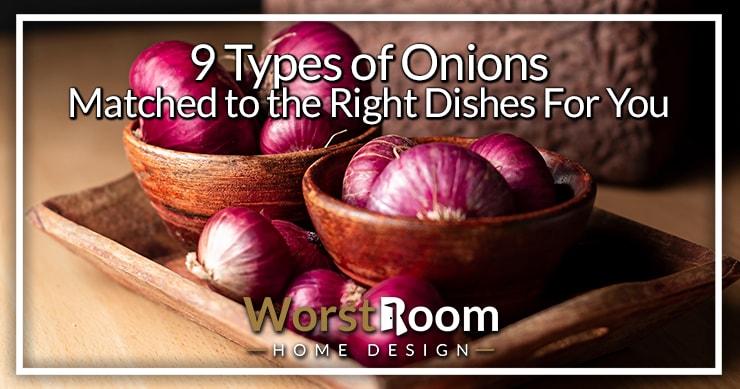
We all have a love-hate relationship with the various types of onions. They make us cry as if we’ve just seen the saddest thing ever happen. But we’ve got to admit; onions are the backbone to loads of dishes in multiple cuisines.
Aside from the common onion types that we know about, there are many different kinds. They vary in taste, aroma, regions, and the time of the year they grow in.
If you know how to identify them and learn to incorporate the right kind into the right dish, you’ll marvel at how different your dishes taste instantly.
We’ve chosen some common and uncommon onion kinds, depending on their flavor, smell, or use, so continue reading to know more.
9 Types of Onions
Onions are part of the allium family and are extremely versatile. These types of allium are rich in natural sugar, multiple vitamins, sodium, potassium, amongst others. You can grill them, caramelize them, fry them in batter, eat them raw, or even learn how to grow onions!
Yellow Onions
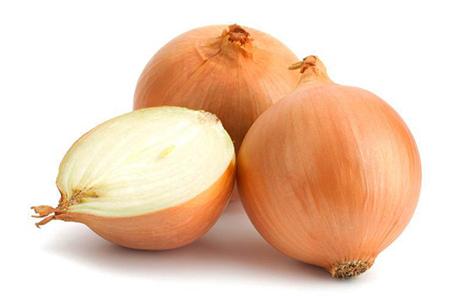
Yellow onions are pretty much the go-to onion for every dish. These onions are a staple in most households with either an ivory white, light yellow, or greenish-white flesh and a yellowish-brown parchment skin wrapped around them.
They're cheap because they're so plentiful. They add flavor easily. Note that when a recipe calls for onion and doesn't specify a color or type, they mean yellow onions.
The sulfur content in this dry onion is very high, which gives off a strong and complex pungent flavor. Due to their rich taste, they are best used in French onion soup, stews, and other savory dishes.
Yellow onions and their varieties grow during warmer seasons but are available all year round. They should be stored in cool, dark places. If the recipe does not call for a specific onion, you can never go wrong with yellow onions.
Sweet Onions
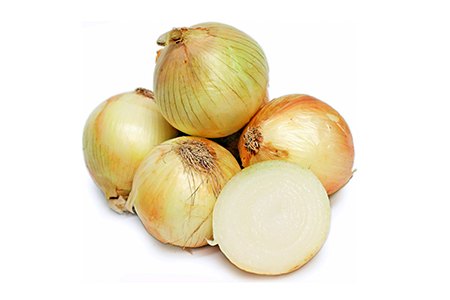
A lot of people confuse sweet kinds of onions with yellow onions. They look very similar, but the former is slightly flatter, has less opacity and taste.
They taste sweet not because of the high sugar content but due to the lack of the expected sulfuric punch. So, you can taste the natural sugar very easily.
Since they are not overpowering, you can use them for stuffing and baking, as well as caramelizing. You can also chop them for garnish or toss them in a salad.
They can’t provide the complex oomph of flavor you may desire in savory dishes, so they should be avoided for regular cooking.
Depending on the time of year they grow in, sweet types of onions can be of different varieties that will all satisfy you.
Maui onions grow from May to the end of the year, Texas Sweets from March till June, while Vidalia Sweets and Walla Walla sweets are cultivated from April-June and June through August, respectively.
White Onions
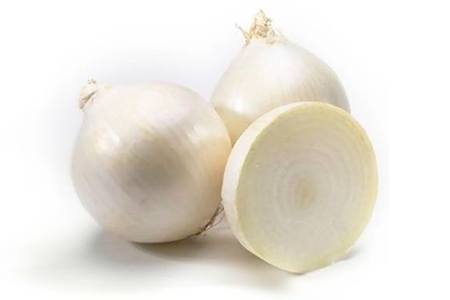
White onions get their name from their papery white skin and because they are grown from the bulb of a plant having the same name. They have a distinct flavor, but it is pretty mild compared to other onions.
White onions need neutral pH soil to grow, and different varieties of onion require different amounts of sunlight.
Short-day onions need at least 10-12 hours, while intermediate-day onions need more, around 12-14 hours. Long-day onions grow in areas getting 14-16 hours of light.
Their smell is not as strong, nor is their taste which is relatively light due to their high sugar and low sulfur content. If white onion types are chopped and soaked, their profile becomes even sweeter as they lose their astringency.
White onions are primarily found in Mexican and European cooking. But due to their easy palatability, they are added to almost all salads, garnishes, and even eaten raw. You will also find that white onions are used in fermented dishes.
Red Onions
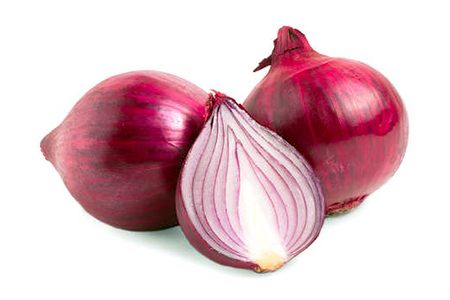
Red onions have a purplish-red wrapping covering a red-tinged white body. Due to this feature, in some countries, they are called purple onions. Not only are these onions used in food, but their skins are also utilized to extract dyes.
They vary in size, mainly on the larger end of the scale. Cutting these onions is a nightmare since they will make your eyes sting and start the waterworks from the very beginning.
But they have a sharp flavor and taste amazing in almost all dishes, especially when grilled or lightly cooked.
You can find red onions any time of the year. Since they are rich in flavonoids and fiber, they are also much healthier. To add a splash of color to your dish, just toss some red onions in, and it will work like a charm.
But if you find these types of onions to be too pungent, a trick is to soak sliced onions in cool water for some time. You’ll still get that rich flavor without the “bite.”
Shallots
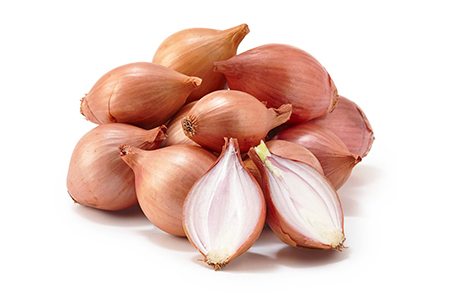
Shallots are not that popular in American cuisine, which is very weird since they’re very flavorful. They have purplish flesh and brown skin, and their bulbs are structured with many lobes. Their skin colors can also be found as grey or rose red.
Until a little more than a decade ago, they were classified as different species with garlic, leeks, chives, etc., as their relatives. Even now, a lot of people don’t consider them as onions but close cousins.
Although they were initially cultivated in Central or Southwest Asia, they have been found in India and across some parts of the Mediterranean. But it is believed they were originally found in Greece from where they have got their names.
Shallots are more popular in Asian cuisine than anywhere else, either picked or deep-fried. They are the traditional choice for many ethnic dishes.
Despite being extremely irritating to the eye, their flavors are somewhat mild and are perfect for sauces, dressing, and vinaigrettes.
Scallions
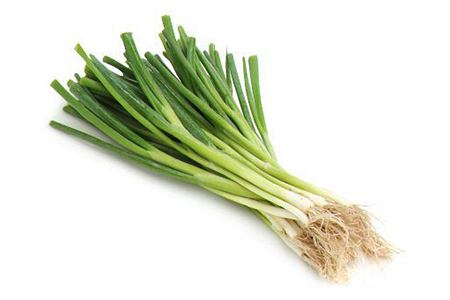
Scallions, or green onions, are also known as spring onions in some communities. They don’t resemble typical kinds of onion as they lack a fully developed bulb.
While some people categorize them like onions, others group them into the same family like shallots, leek, chives, etc.
They are long, thin, and of course, green. Their tubular leaves stem directly from the bulb and are chopped or sliced to be served as types of garnish.
Asians love incorporating these types of onions into their cooking, especially in salsas, salads, stir-fries, noodles, and seafood.
Scallions, like shallots, can be traced back to their Greek origins. That is why, in a few English-speaking countries, these onions are referred to as shallots, or French shallots to be exact.
Leeks

We have another relative of the onion-cousin group: Leeks! They resembled overgrown scallions, with leaf sheaths known as stems or stalks.
Leeks and different kinds of onions can grow side-by-side, but the former needs to be harvested for at least six months from planting.
Leeks are considered a delicacy and are included in gourmet food. Uncooked, they are raw and firm.
From soups and sauces to being baked and topped, leeks can be pretty versatile. Trust me; if you add these types of onions to your dishes, you’ll be in for a real treat.
Just start chopping from above the roots and stem base and add it to your food. The higher you go, the less edible they are because of their hard texture, but that doesn’t mean you have to throw them out.
You can use the dark green sections of leek for your stocks to add a little kick to it. It works great in Asian soups.
Chives
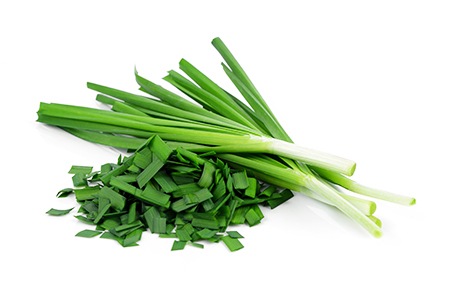
If we are talking about the cousin group, then we must speak of chives. They are underappreciated and often forgotten, despite being such a great vegetable. Chives are used as seasonings, perfect for spicing up your dishes by a notch.
They are the leaves of flowering plants, and both the stalks and immature flower buds can be consumed in many dishes. Supermarkets classify them as herbs rather than onions.
If you don't want to deal with finding them at the grocery store, you can learn how to grow chives yourself. It's real simple with plentiful harvests that can keep on going for far longer than you expect. Backyard farming is a blast, but you can even grow chives in your window sill.
Their flavor isn’t overpowering, so that you can find them in French, Swedish, and other culinary dishes to balance out the other ingredients. In fact, many European countries share a long deep history with chives.
Pearl Onions
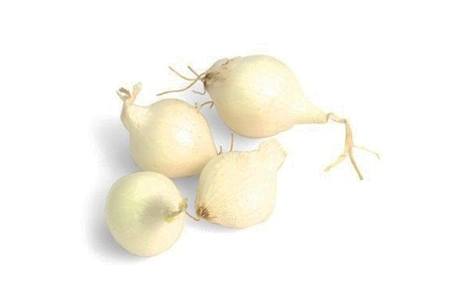
Pearl onion types are must-haves if you’re planning to up your cooking game. They got their names because of their size, which is around ¼-inch to 1 ½-inch in diameter.
Besides the more common white, these dried onions come in red or brown and are sold loose or netted bags in markets.
Pearl onions are notoriously hard to peel, but you can cook them whole without chopping if you succeed.
You can roast, glaze, or make pickles, and they turn out delicious. They are also traditionally used as garnishes for cocktails as an alternative for olives.
If you find them difficult to peel, place them in boiling water for about a minute before transferring them to a pot with iced water.
The skin will slip right off. Their taste is mild and sweet, and when added to anything gravy, the flavor is bountiful and phenomenal!
Types of Onions for Every Garden & Plate
Once you start appreciating these bulbs, your cooking game will be on a completely different level, and there will be no going back.
While there are some more different types of onions available, these onions and their close relatives have the most variety of culinary uses. The lesser-known ones are cipollini, Egyptian onions, amongst others. But you know know the important ones!




